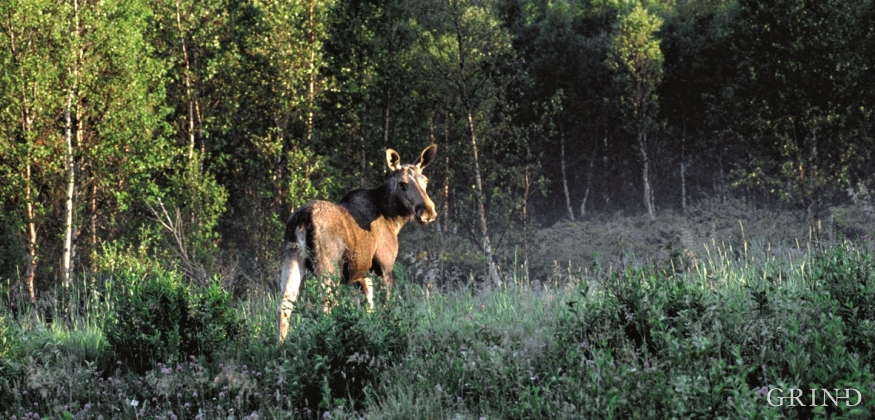Published: 11.10.2004 | Author: Stein Byrkjeland
THE BIGGEST CREATURE IN VOSS
Thousands of years ago - when the climate was warmer than today - there was probably a lot of moose in Hordaland. We know this from finds of bone from Stone Age settlements. In modern times moose have been almost completely absent from western Norway, until this "King of the Forest" began its come-back, about fifty years ago.
The new period of immigration is believed to be a result of a marked increase in the moose population in Hallingdalen and other valleys of inland Eastern Norway. After stray animals were reported in western Hardangervidda in the 1940s and 1950s, moose has spread over steadily larger areas in Hordaland. The immigrants tend to follow three routes: over Haukeli toward Odda and Åkrafjord; over the central plateau to Ullensvang and Eidfjord; and the most used route: over nordvidda plateau and down Raundalen valley via Finse and Gravahalsen. Voss has therefore the biggest population of moose in Hordaland. The Voss herd is now self-replacing, and no longer dependent on immigration. It is difficult to say how large it is, but groups of up to seven animals have been observed. The moose prefers to stay around Raundalen and the central coniferous forest areas.
Early in the 1970s there was so much moose in the municipality that moose hunting was permitted, but it was not until nine years later that the first reports were made that an animal had been killed. Today it is permitted to hunt moose in seven municipalities in the county. The numbers for 2003 show that 42 animals were killed out of a quota of 88 in Hordaland. During some years Voss municipality alone has accounted for over half of the catch.



